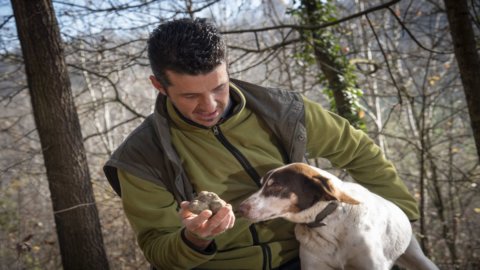The "Truffle hunting and extraction in Italy: traditional knowledge and practices" enters the intangible cultural heritage of humanity protected by UNESCO. This was announced by the president of Coldiretti Ettore Prandini during the National Assembly of the main European agricultural organisation, communicating the decision adopted by the sixteenth session of the Unesco Intergovernmental Committee meeting in Paris. A result that was celebrated with a maxi tray of tagliolini with truffles for the hundreds of farmers together with the political leaders of the main parties and movements present in the Assembly. The entry of the truffle among the World Heritage Sites – underlines Prandini – is an important step in defending a system marked by a special relationship with nature in a rite rich in anthropological and cultural aspects. A determining tradition for many mountainous and disadvantaged rural areas - continues Prandini - also from a tourist and gastronomic point of view
The art of truffle hunting in Italy involves a national network made up of about 73.600 holders and practitioners, called tartufai, gathered in 45 associated groups in the National Federation of Italian Truffle Associations (FNATI), by individual truffle hunters not united in associations for a total of about 44.600 units and by another 12 truffle hunters' associations which together with the National Association of Truffle Cities (ANCT) involve around 20.000 free seekers and quarrymen.
A vast community, distributed in the various Italian regional territories, which initially involves the quarryman-dog couple in a harmonious relationship between the quarryman and nature which is the basis of the transmission of knowledge and techniques related to hunting and quarrying identified as a practice sustainable. While within the family it is still the single oldest truffle hunter, grandfather or father, who teaches the new generations the secrets, tricks, places and techniques of hunting and quarrying.
The Italian art of truffle hunting enters the UNESCO list of intangible cultural heritage of humanity alongside many Italian treasures already registered from the Opera dei pupi (registered in 2008) to the Canto a Tenor (2008), from the Mediterranean diet (2010 ) to the Art of the violin in Cremona (2012), from the shoulder machines for the procession (2013) to the sapling vine of Pantelleria (2014), from the art of the Neapolitan pizza makers (2017) to the Falconry up to the "Art of dry stone walls” but there are also symbolic places protected by Unesco such as the Prosecco hills and the beech woods of Aspromonte and Pollino.
From Piedmont to the Marches, from Tuscany to Umbria, from Abruzzo to Molise, but also in Lazio and Calabria, there are numerous territories visited by researchers. The search for truffles already practiced by the Sumerians - reads a Coldiretti note - performs an economic function in support of the internal wooded areas where it represents an important income supplement for the local communities, with positive effects on tourist flows as demonstrated by the numerous opportunities for celebration organized in his honor. The truffle - reports Coldiretti - is a fungus that lives underground and is made up of a high percentage of water and mineral salts absorbed from the soil through the roots of the tree with which it lives in symbiosis.
Being born and developing near the roots of trees such as pines, holm oaks, cork oaks and oaks, the truffle owes its characteristics (colour, flavor and aroma) precisely to the type of tree where it developed. The shape, on the other hand, depends on the type of soil: if soft, the truffle will appear smoother, if compact, it will become gnarled and lumpy due to the difficulty of making space. Truffles are known for their strong aphrodisiac power and in the kitchen the white (Tuber Magnatum Pico) must be strictly tasted raw on well-known foods such as fondue, butter tajarin and risottos and as regards wines it must be combined with great reds Made in Italy.
Talking about truffles means telling about a heritage that has characterized the rural life of large portions of the Italian territory for centuries: "The practice - reads the dossier presented by Italy for the candidacy - brings together vast knowledge, focused on the deep knowledge of the natural environment and of the ecosystem, and also emphasizes the relationship between man and animal, bringing together the skills of the truffle hunter and those of his dog. It is a centuries-old tradition, handed down through stories, anecdotes, practices and proverbs that tell of a knowledge that brings together rural life, protection of the territory and haute cuisine".
In Italy there are about a dozen main species of this underground mushroom. If the most famous is Bianco d'Alba, which is harvested only in late summer, autumn and early winter, Nero Pregiato, the black diamond of the Apennines, also finds many fans. And we cannot forget the Bianchetti or Marzuoli and the summer ones.





